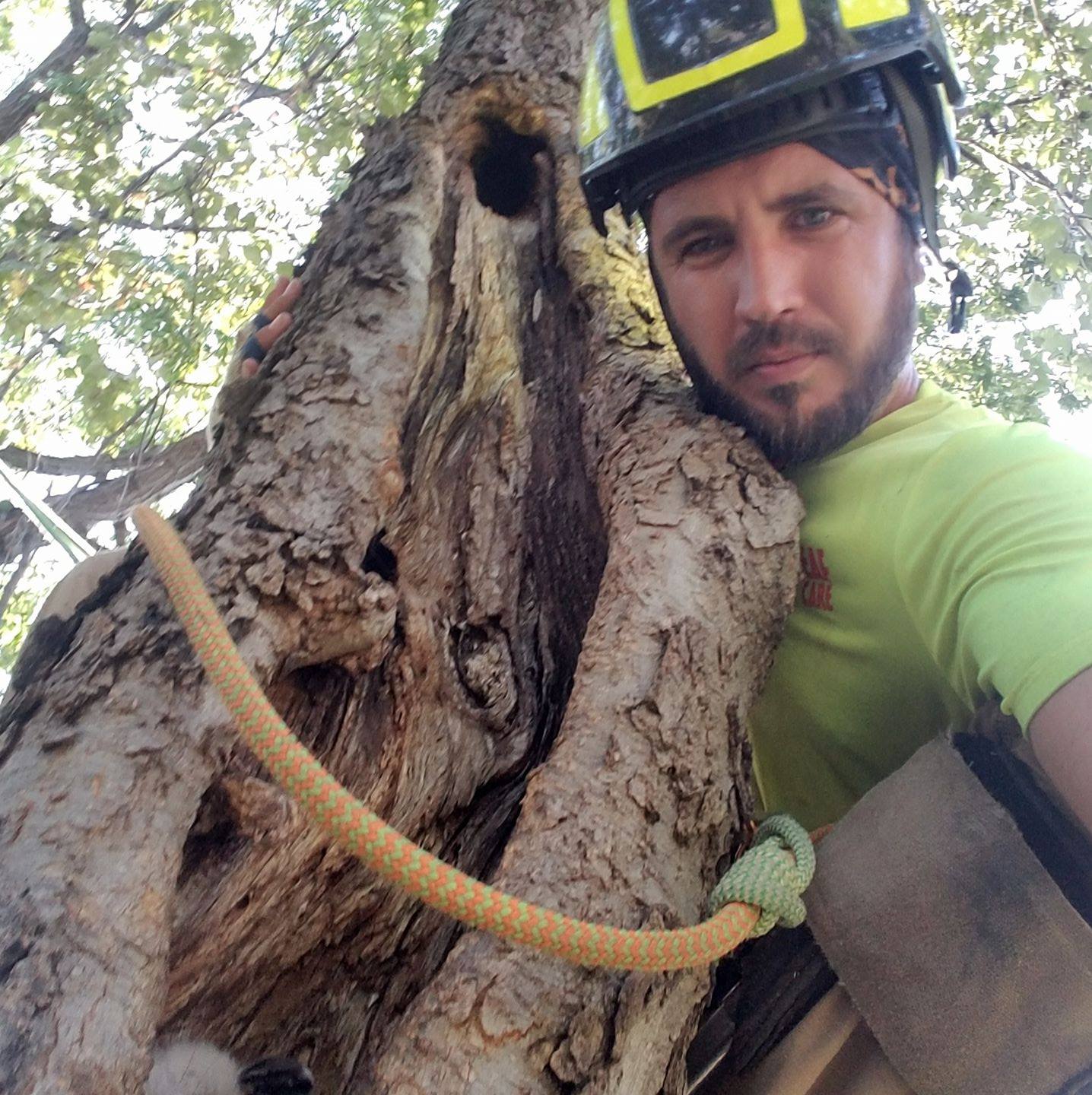As we move into the summer months, cold weather conditions have passed. For many Texas homeowners, though, this last winter left its mark on trees and property. Now is the time to examine your trees for signs of winter storm damage.
In this blog, we’ll take a look at different types of winter storm damage and follow up with tips on how to recognize and treat this damage.
Superficial damage may be fixable for non-professionals, provided they have access to a few basic tools. Due to safety concerns, significant damage is best handled by professional arborists like us over here at Arbor Leaf Tree Care.
Common Causes of Winter Storm Damage
Winter storm damage is caused by:
- Wind
- Snow
- Ice
- Freezing rain, sleet, and hail
This past February, winter storms with sustained freezing temperatures, high winds, snow, icing, and hail hit the Dallas/Fort Worth area. Homeowners saw heavy damage to trees and shrubs.
If you live somewhere that experienced moderate-to-severe winter weather, it’s important to make sure your trees haven’t been harmed in serious ways.
There’s a difference between cosmetic damage and structural damage. The latter could lead to hazardous conditions. With structural damage, branches, limbs, or entire trees, are at an elevated risk of falling. At the very least, unattended damage could contribute to poor tree health.
Fortunately, most trees that have suffered from winter storm damage can heal with proper care from a certified arborist or a motivated homeowner.
How to Care for Winter-Damaged Trees
Trees are resilient, so don’t be distressed if you find that some of the trees in your yard sustained damage to one or even several branches.
Damage Assessment
The general rule of thumb is that as long as a tree has lost less than 50% of its branches, it will survive. And even if more than that has been lost, there’s a chance it can be saved as long as the “leader” (the vertical stem at the top of the tree) isn’t broken.
And don’t just look at the branches. Bark damage is a common result of winter storms.
Cut Away Small Broken Branches
If you find branches that have been broken — either from wind, the weight of snow, ice, or another factor — they will have to be removed. Small branches should be cut away where they connect to larger branches.
Go for clean cuts. A clean cut will heal faster and reduce the risk of infestation from pets. Interested in improving your technique? Here’s a helpful guide detailing how to make proper cuts.
Leave Large Branches to an Arborist
Large branches present a whole host of challenges. For larger branches, clean cuts are more difficult and require specialized equipment. So it’s best to leave larger branches to an arborist. If you need help with the big branches, give us a call.
Repair Cuts & Wounds in Bark
Winter storms may also damage trees at the bark level in the form of cuts and wounds. Use a sharp knife to cut away jagged pieces of bark around the wound. Cut in an oval around the damaged tissue, making sure to keep the knife as shallow as you can — you don’t want to damage any more of the tree than you have to. As long as the wound isn’t too extensive, the tree will form a callous over the damaged area.
Look for Frost Cracking
Winter storms may also lead to damage in the form of frost cracks in the trunk of a tree.
Frost cracks occur when the temperature drops below freezing and then warms soon after, causing the bark to contract, then expand past its breaking point. The result is a vertical crack running along the trunk. If the crack is wide enough, you can treat it like any other wound. If it’s too thin, leave it alone. Frost cracks are rarely lethal to trees.
Beware of Pests
Be sure to keep an eye out for pests, which can enter a tree through these damaged areas. And avoid using a sealant or wound dressing, as they tend to do more harm than good.
Steps You Can Take to Prevent Issues for Next Year
Treating trees subjected to winter storm damage is one task homeowners should take care of sooner rather than later. Left alone, damaged trees may appear to come back into good health. Don’t be fooled.
Damage will remain, and damaged trees will run an even higher risk of falling or sustaining additional damage the next time winter storm damage hits.
Tips for Branch Removal
First, cut away weakened or compromised branches. Remove branches that have already been broken. Cut away weak branches that are at risk of breaking.
Be sure not to get carried away. Cut away no more than 20% of branches. If you find yourself needing to cut away more than 20%, call us as soon as you can for help.
Potential Safety Concerns After Winter Storm Damage
Look for any branches extending over utility lines or your home. Winter storm damage will accelerate the weakening of overhanging branches and limbs.
Future winter storms could suddenly raise heavy-duty safety issues for homeowners, with heavily damaged trees in potentially hazardous locations.
Hire an Arborist for Big Tree Pruning Jobs
If you need to prune one or two damaged branches, it’s probably safe for you to do so on your own. But if you need to remove lots of branches or assess heavy winter storm damage, hire a certified arborist. It’ll save you time and money in the long run.
Arbor Leaf Tree Care offers free estimates. If you’re in the Dallas-Ft. Worth area and want to help your trees recover from winter storm damage, give us a call.

